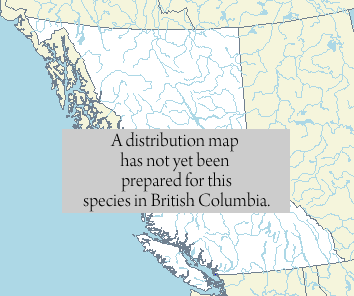The California Sea Lion is smaller and darker than the Steller Sea lion. Adult males are about 2 – 2.5 meters (6.5 – 8 ft) long and weigh 200 – 200 kg (450 – 900 lbs). Pups weigh about 8 kg (18 lbs) at birth and may nurse for up to a year. The pelage is usually dark brown and appears almost black when wet. Mature males deelop a patch of light coloured fur on the crest of their heads.
Zalophus californianus (Lesson, 1828)
California Sea Lion
Family: Otariidae
California Sea Lion
Family: Otariidae
Species account authors: Peter Olesiuk and Michael Bigg
Extracted from Marine Mammals of British Columbia, Department of Fisheries and Oceans.
Extracted from Marine Mammals of British Columbia, Department of Fisheries and Oceans.
Photograph
© Peter Llewellyn (Photo ID #2957)
Map

Species Information
Biology
|
Distribution
|
Status Information
BC Ministry of Environment: BC Species and Ecosystems Explorer--the authoritative source for conservation information in British Columbia. |
Additional Notes
|
Taxonomic and Nomenclatural Links
Additional Range and Status Information Links
Additional Photo Sources
Species References
|
References for the Additional Notes: Feldkamp, Steven D., Robert L. DeLong, and George A. Antonelis. Diving patterns of California sea lions, Zalophus californianus. Canadian Journal of Zoology 67(4): 872–883.
Olesiuk, P.F. and M.A. Bigg. 1988. Seals and sea lions on the British Columbia Coast. DFO Special Publication, Pacific Biological Station, Nanaimo, B.C. |